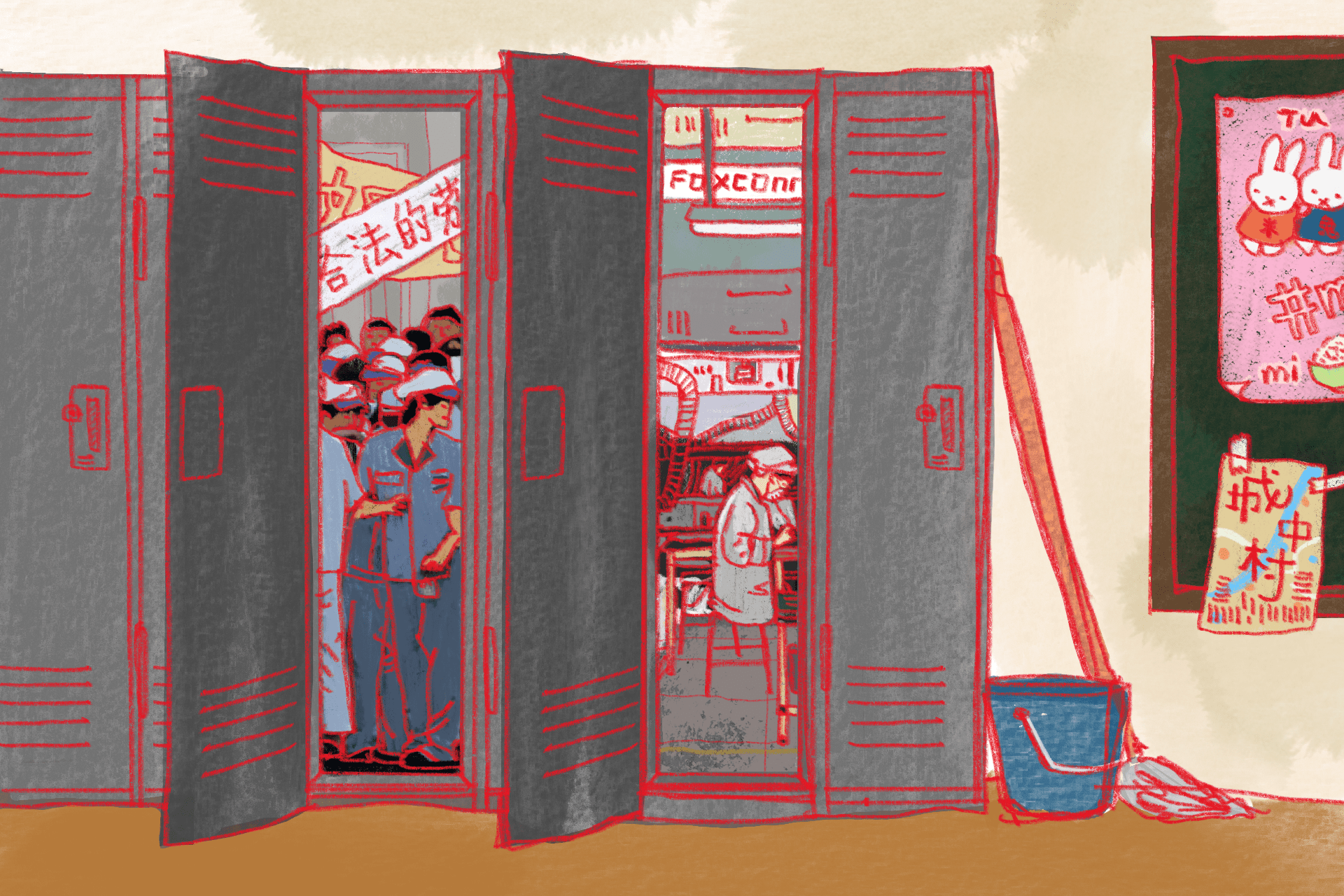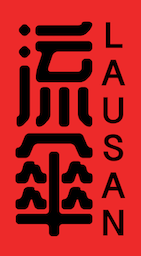Original: 【青年行動者訪談:「我們能做什麼呢?」】, published on Matters
Translators: Chin Kinnan and Hung X.L.
If you would like to get involved in our translation work, please get in touch here.
Interviewer’s note
As Chinese university students contemplate systemic oppression against those who are most marginalized, they face an important choice: to stand alongside them and advocate for social reform, or to concede that this is an inevitable and intractable phenomenon. In the past ten or so years, as class fragmentation and societal contradictions become more acute, university students have begun to weigh in on many societal issues, such as voicing support in the fight for workers’ rights. But with the suppression of civil society, along with rising risks to personal safety, the space for university students and youths to participate in social movements has shrunk.
Masses interviewed Xiaozhou, an activist who started working on labor issues during their university years. We explored how they first developed an interest into societal issues, and how they made use of their experience to mentor other youth activists. We also discussed how we ought to reflect and respond to setbacks in the labor movement.
Labor activism on campus
Masses: You started your civic engagement ten years ago as an undergraduate at South China Normal University. Many activists who came after you also mobilized around the same time. Can you tell us a bit more about the school and the social setting then, and how it led you to become active in social movements?
Xiaozhou: Around ten years ago, I first focused on left-behind children‘s education as I taught in rural villages. At the time, many of us were participating in actions on campus, but weren’t really participating in actions organized by labor advocacy groups. Since much of these organizations’ work was geared towards workers, they didn’t relate much to the day-to-day experiences of university students. University students participated mostly in education, the environment, gender, or other rights-related issues. Teaching in rural villages brought me into the nonprofit industry, exposing me to many different charitable organizations. At the time, it was easy to get to know different nonprofits since events and seminars often attracted participants from different sectors.
In such a vibrant atmosphere, youths who were civically-engaged developed nuanced perspectives and social connections. The culture of my university encouraged students to be active in organizing events. For example, I had formed a discussion group focusing specifically on rural villages. I would then invite students from the Guangdong province volunteer teaching corps to organize forums to discuss future directions, or to strategize future actions. Young people paid a lot of attention to public policies, often critiquing those that were problematic. They would initiate inquiries and write letters to decision-makers, engage in performance art to garner press coverage, or write articles and blog posts. Back then, these activities were quite influential. Regardless of specific social causes, the focus had always been fairness and justice for all of society.
At the same time, we would also organize on campus. If a certain school policy is ineffective, we would organize protests or petitions online. Influenced by Occupy Wall Street, students (including myself) have occupied abandoned buildings on campus. We believed that students should determine how campus spaces were used. When the school was unwilling to respect students’ voices, we would take over a building for a month, and organize from within it, turning the entire space into a classroom. This brought together many people, and it was quite fun to be a part of that. It was also a concrete way to challenge authority.
M: Although in the beginning you weren’t necessarily involved in the labor movement, you quickly shifted toward this area. How was it that you pivoted and focused on labor issues?
X: I found it to be a gradual process. I participated in many public deliberations, including advocacy and actions around labor rights. For instance, I tried doing undercover work at Foxconn in 2011. Even though there was already investigative research on Foxconn conducted by faculty and students from mainland China, Hong Kong, and Taiwan, I was curious and wanted to understand what it was like there. As a result, I went and worked there for a week when I was on break.
After that, I realized the grave importance of the labor front. I saw firsthand how labor issues are very complex and systematic, as they lie at the intersection of the rural-urban divide. When I was a volunteer teacher, I would often reflect on how poor and impoverished the education system was in the villages. When I was at Foxconn, I would also reflect on why workers were so oppressed. When I connected these two issues, I discovered how urban-rural issues are interconnected and are born of the same structure. Since I was also concerned with public policies, I realized how many policies do not account for the interests of those who were at the bottom of the social hierarchy. I came to believe that public policy must be problematic if it doesn’t benefit the most marginalized workers.
During that time, I also got in touch with several labor organizations. Back then, they did not have much say at all in civil society. When they introduced themselves at events, very few people would know them, and there weren’t many who deemed their work important. Around 2010, an organized civil society in Guangdong began to emerge and flourish in numbers. There was substantial public engagement, and a collective inclination towards public accountability became more pervasive. Based on my observations, however, labor organizations were still fairly marginalized as part of the greater ecosystem of civil society. Hence, I felt that labor groups might need more support than others given the limited resources and public awareness they received.
I saw firsthand how labor issues are very complex and systematic, as they lie at the intersection of the rural-urban divide.
M: For those who are still in school, many are not sure how to begin forging ties with workers. How did you get in touch with them when you first started participating in the labor movement?
X: When I went undercover at FoxConn for a week, I intended to just gather firsthand experience, rather than to do research on it or to organize workers. I mostly wanted to understand from my perspective what was going on. What solidified my desire to work in the labor movement was a series of strikes in 2013: four to five districts in Guangdong went on strike in quick succession, and I bore witness to it. I first heard about these strikes from my reporter friends. When the strike first began, news outlets were barred from reporting on it; it was only through friends in the media that I found out about it. I was fairly interested in the matter already, and I felt a deep sense of urgency to understand the situation. At that time, I felt that workers must be in very dire circumstances, or they wouldn’t resort to strikes as a form of advocacy.
My interaction with labor groups and workers has been smooth. Maybe because I myself grew up in a village, I didn’t feel any hesitation approaching workers who came from there. I would chat with them directly. They, in turn, were very enthusiastic to chat with me. Workers are often very trusting when they interact with activists. I give them a lot of encouragement, and they would reciprocate in trust. I put their experiences in writing, sharing them online. I also published open letters to various labor departments, urging them to resolve the situation. At the time, my approach to settling labor disputes was still very top-down, giving policy recommendations to those in power, rather than organizing workers from the bottom-up.
My generation’s coming of age was intimately connected to the media ecology at the time. Many activists were educated and motivated by what we saw in the media: we were encouraged by the many people we saw who were actively organizing movements. I too made public appearances and went into action after 2011, and subsequently attracted other young people to participate in collective actions and public affairs. After an activist made an ask, others would often follow up with inquiries on how they could contribute. Some would make suggestions on what we should do, and we would then promptly put these plans in motion. This was pretty much our modus operandi.
When I get involved with a movement, I’d often think about how I could influence others. For example, I might take them to see a strike in action. Some students might feel uneasy and awkward approaching workers and would have trouble finding common ground. In these situations they may need some assistance to overcome their fears.
Navigating state suppression
M: Compared to when you first entered labor organizing, there have been waves of suppression against the movement in recent years. How do you make sense of these recent developments? What impact do you think suppression has had on the labor movement?
X: As far as the government’s crackdown on civil society, it officially started in the latter half of 2014, but unofficially it was already taking place in 2013. The Southern Weekly Incident was a case in point. Repression against labor networks and organizations began around 2012, with the harassment and forced evictions of different labor groups in Shenzhen. It was not until 2015 that the government began to criminalize labor groups, and the situation worsened with time.
Crackdowns come in two ways. One is direct and political, wherein people are arrested, and their organizations disbanded. The other way is indirect and implemented through the use of ancillary laws, such as the Internet Security Law, Charity Law, or Overseas Non-Governmental Organization Law. Both methods are used to clamp down on civil society. After 2012, as governmental departments started outsourcing their services to social organizations, a chasm emerged between organizations that worked with the government and advocacy groups that didn’t. While the former began to soften their stance, the latter became marginalized.
In contrast, some rights groups became more uncompromising in their advocacy. As these groups stepped to the fore, their influence in society in turn strengthened. The government would then see them as a rising threat, and began cracking down on them. The government’s crackdown on labor groups is a political response to more radical rights-oriented organizations in Southern China. The government intended to create a chilling effect by cracking down on labor rights groups and making an example out of them.
Right now, many labor organizations have become more reserved and moderate. For example, many no longer engage in collective bargaining or have since gone underground. However, the government doesn’t find that sufficient, as it wants to thoroughly uproot these groups by cutting off their financial resources. Thus, the government introduced the Charity Law to restrict public fundraising, and subsequently implemented the Overseas NGO Law; these laws significantly threatened the financial sustainability of these organizations.
This forced rights groups to pivot to become organizations that would be accepted and managed by the government, like those in social welfare. Feeling this pressure, many labor organizations adjusted their mission and focus, as their operational space shrank significantly. The efficacy of their labor advocacy was thereby weakened. Some organizations were even forced to shut down entirely. This is a trend that not only permeates the present but is also gaining momentum in ideas about the future of civil society.
Recently, an organization unexpectedly raised USD$74,000 online. This, however, doesn’t indicate that labor groups have regained lost ground. If anything, the unexpected funds came from the citizenry’s pent-up support and yearning for labor organizations. That alone, unfortunately, cannot salvage the situation nor reverse the overall decline of Chinese civil society.
Take students to observe strikes, and encourage them to write reports from their point of view to give workers a long-denied voice. Allow students to develop connections with workers directly in the field.
M: Under such circumstances, is it still possible to encourage youth participation? Based on your experience, how can we foster a new generation of organizers?
X: Compared to training programs, participatory mentorship is more effective. Take students to observe strikes, and encourage them to write reports from their point of view to give workers a long-denied voice. This helps them get to know workers in-depth and gives them a point of entry in contributing to labor advocacy. Present them with a problem, immerse them in the situation, and encourage them to think critically and troubleshoot under those conditions. Give them confidence and encouragement, and they will slowly get used to problem solving.
We can also encourage students to help workers out directly, such as delivering water during a strike, teaching them union songs, compiling newspaper articles for workers, or writing about the movement online. Students are, in turn, encouraged by how warmly their actions are received by the workers. Allow students to develop connections with workers directly in the field. Afterwards, students often find workers easier to warm up to. Some then begin organizing in solidarity with workers to address their labor conditions.
M: How have young organizers dealt with this era of labor suppression?
X: In recent years, not only labor organizations, but civil society as a whole has been completely dismantled. Organizing platforms for young organizers have also dwindled. In the past, civil society had been fertile soil for the nurturing of young organizers. However, after multiple rounds of suppression since 2014, civil society in northern and southern China has been eviscerated. There isn’t as much youth participation in civic engagements. It is also difficult for labor organizations to find new participants and organizers.
On the other hand, I believe that there are still many young people who are interested in organizing. However, because of the shrinking political space for civic activities, grassroots organizations that can cultivate movements from the ground up are mostly gone. As a result, there is virtually no room or capacity to train up new organizers, and any hope that social praxis can be systematically reproduced has been dashed.
“I want to mentor you, but I have no opportunity to give you hands-on training.” This is a common lament. The situation is such that the only leaders of labor organizations are older folks who have maintained them for more than a decade. Once these institutions collapse, or when the elders quit, there will be no new blood. Many organizations that have survived during the crackdown can only maintain the status quo. A lot of them are still using more traditional methods of organizing, lacking the motivation and imagination to explore novel means of action. Even if they may want to experiment, these efforts often quickly evaporate.
For young people, there are few opportunities for growth. In the past, many people in grassroots organizing tended to move on to other industries, such as working for foundations or in social work. Some would leave to join more mainstream industries, while some bounced between jobs, or suffered from poor mental health. We all got into organizing, to some extent, because of a sense of idealism: those who give up are often torn about their decision, and mainstream employment rarely goes well. Those who are not completely disillusioned often end up in less radical institutions. Most people are unlikely to return, because everyone is pessimistic about the current predicament that faces all organizers, and there are family pressures and mainstream social expectations to deal with too. When it comes to mental health, 60% or 70% organizers suffer from depression. It’s frequently brought on by institutional pressures and political despair.
Future directions
M: We’ve witnessed how the feminist movement has provided different means of participation for young people. As a result, many continue to engage in the movement despite difficult times. What differences do you see between the work of labor and feminist movements?
X: These two movements operate very differently. When room exists for the feminist movement to grow, activists tend to engage in offline interventions, such as performance art. In general, however, they have always focused on theory. Performance art, in part, helps to shape the development of this discourse. The movement’s other focus is to promote and popularize feminism: Any conversation that touches on gender and sexuality is part of feminist activism.
The labor movement works differently. Labor organizations mostly focus on grassroots organizing. Most of this work cannot be moved online, and it is also difficult to train people remotely without first exposing new activists to the field. While many young people sympathize with workers, there remains a big gap between sympathy and action. Labor organizing takes patience, and can be extremely boring and dreary at times. Folks who cannot stand the loneliness often do not last long. It’s harder to have a sense of accomplishment now, because we can only execute small actions in the face of crackdown.
In addition to material restrictions, compared to our peers in the feminist movement, I must admit that organizers who work in labor organizing lack imagination for organizational work and worker empowerment. Right now, we are unable to provide a personalized process to recruit and onboard new activists online.
M: Finally, what kind of reflection do you think we should do to help grow the labor movement?
X: The questions we should answer in the next ten years include: how to think outside of the conventional institutional framework, and how to establish labor organizations more organically. The past ten years have taught us a lot: We went through a “golden era” of organizing, but we did not fully cherish it. We did not realize how weak the foundations of our institutions were, and how they could crumble under political suppression. In addition to lamenting how effective the regime has been in suppressing advocacy groups, we must also reflect on our own inadequacy. The fundamental groundwork we have done is still not solid enough.
The current environment is sending us the message that if we want to survive, we must compromise. But that’s just what the regime wants us to think. The regime could effortlessly destroy us, but it actually prefers to keep us barely alive so that it can continue to surveil and study us in order to plumb the depths of civil society. We, in turn, become implicated in the regime, indirectly contributing to its strength.
This is exactly why we need to be more introspective: It is precisely because we are embedded within these hegemonic structures that we can’t just roll over and succumb to what the regime has in store for us. But this does not mean that the goal is to return to where we were in 2010. Rather, we need to use the next 10 years to explore new pathways of dissent that would serve as the basis for the next 30 to 40 years. Although we have retreated for now, we would not be starting from scratch. It is our task now to rebuild the movement’s foundations, and establish new organizations organically.
Labor organizations have long lacked this kind of political awareness. Our current predicament is the result of state suppression but, on the other hand, we have never tried to build power with and in turn empower our comrades across movements and the masses at large. We have never cultivated the relationship between the masses and civil society. We need to address this reality frankly.




